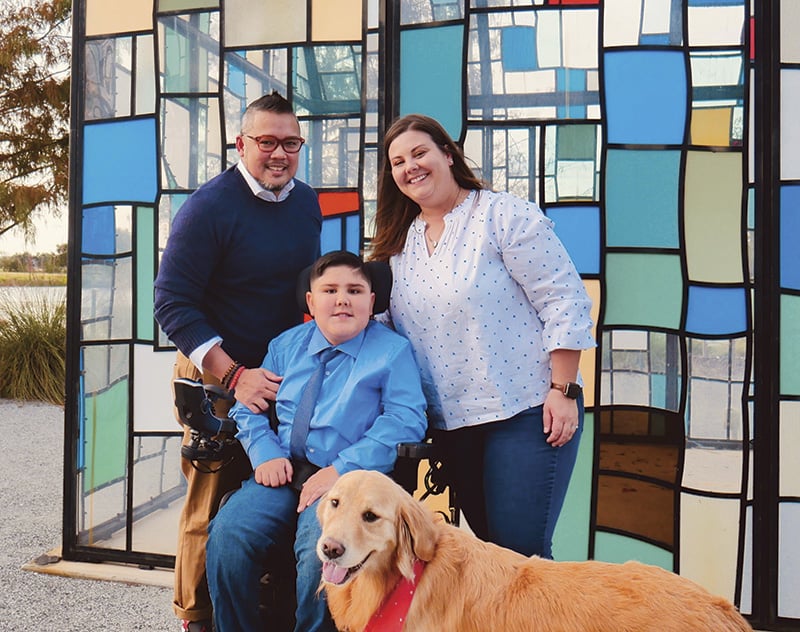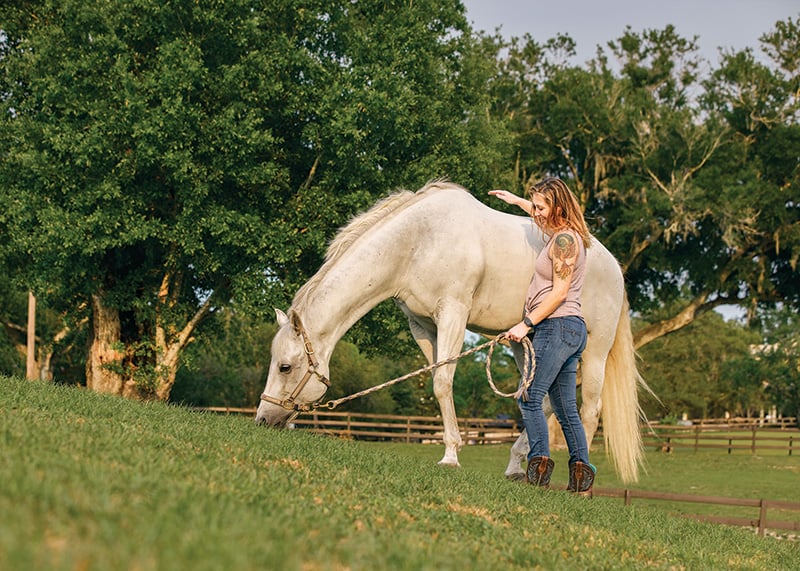Fall Risks and How To Avoid Them: A Central Floridian’s Tale
It’s been almost a year since I missed a step in my house, flew into a bookcase and flipped over on my back, hitting the hard tile floor and fracturing a bone in my spine.
Illustrations by Michellina Jones
Before all this happened, I remember rushing around in the early morning hours, as I often do, yelling at my cats, Clyde and Sammy, who were fighting at the time and apparently distracted me. The next thing I knew, I was on the floor in enormous pain, calling for my son, who thankfully was nearby.
As I lay on the cold tile, it felt as if every nerve in my body had begun firing, a violent tingling sensation quickly spreading from head to toe, especially in my hands and back.
I’m sure I was in shock. The paramedics later told me that my blood pressure was off the charts when they arrived. The top number, which measures how hard the heart is pumping, soared to 210, almost 100 points above normal. And, while I don’t know what the bottom number registered and never found out, I suspect it, too, was abnormally high. This lower number, in which 80 or lower is the desired score, measures how hard blood pushes up against your arteries when the heart rests between beats.
The paramedics quickly took me to the hospital where I became a future statistic, one of an estimated 3 million or so older Americans who visit emergency rooms for fall-related injuries each year, according to the Centers for Disease Control and Prevention in Atlanta, Georgia.
Falls, in fact, are considered the leading cause of injury and death in those 65 years and older, a demographic to which I reluctantly belong. Recent CDC data show that in 2020 some 36,000 older adults died from their injuries after falling, many from hip fractures, others from traumatic brain injuries, and that the fall death rate continues to rise.
To rule out brain injury in my case, doctors at Holmes Regional Medical Center in Melbourne, where I was taken, did two CAT scans because the first failed to provide clear answers. Luckily, despite hitting my head twice, once on my left temple and then the back of my head, they found no signs of concussion or bleeding in the brain.
But, I had an injury in my thoracic vertebrae, the T12 bone, which is part of the spine supporting the upper part of the body. It predominantly affects the stomach and back muscles and helps with balance and posture.
Later I learned my traumatic fall had caused a specific type of injury, an endplate fracture. Endplates are cartilaginous plates that sit between the spinal disks that cushion the spine and the bony vertebral bones that form the spinal column. So, what did that mean for me? My orthopedic surgeon told me, “Well, Susan, these types of fractures heal more slowly than others and it may take months, or they may never heal.” Not exactly what I wanted to hear.
I did have a surgical option, kyphoplasty, which uses, in part, cement injections to stabilize the spine and carries a high success rate, at least in those without brittle bones. But, the procedure also caries a low risk of fracturing other bones.
As a minimalist, heeding my father’s advice—“if it’s elective, don’t elect” — and also someone diagnosed with a precursor to the bone-thinning disease, osteoporosis, I chose the slow-heal method at home. So far, I admit, my recovery has been discouragingly slow, even though I recently completed several months of physical therapy, which helped strengthen my legs. But, my back remains chronically sore if I sit or stand too long and there’s no way I could do any truly vigorous exercise yet, like running or playing tennis. Still, I can walk again about a mile each day without issue or without a cane and I’m not in constant pain, so I’m grateful.
Experts say after age 65, the major risk factor for falls is age and a history of falling before. How great the risk, they stress, depends on a person’s overall fitness, which can vary widely, with some octogenarians super fit, while others can barely move.
“As we grow older, there’s a shift in the mechanism of bone remodeling,” a metabolic process in which mature bone is removed and new bone formed throughout our lives, says Dr. Lyndon Joseph, a program manager with the National Institute on Aging at the National Institutes of Health in Bethesda, Maryland. As a result, our bones
become more brittle and less dense, making some individuals increasingly vulnerable to fall-related injuries, if, or when, they fall.
In addition to age, however, many other factors come into play. Osteopenia, a red flag for osteoporosis, may increase the fall risk if not treated early enough, Dr. Joseph says, as can a lack of exercise, causing muscle loss, or medications for other conditions that carry side effects leading to dizziness and balance problems. And, the functional changes accompanying aging can affect the generation of power, or the reaction time needed to take a quick step, or break a fall, he says.
Cognitive issues also influence fall risk. “Trying to decide which risk to deal with first is complicated,” Dr. Joseph says, and may require screening, which he recommends, and most geriatricians — specialists in elder care — usually do, especially for balance concerns or medication issues.
But, whether screening the elderly in the broader population should be done as part of regular clinical practice, remains undecided.
Dr. Joseph suggests, for now, it should be part of shared decision-making between doctors and patients about how best to proceed. If a patient already has fallen once, the “indications are something is off and should be tested,” he says, whereas an active individual, who takes an accidental spill, is not necessarily at higher risk for more falls.
Maybe, I’m in this latter group. I certainly hope so.
I’m far more careful now when I’m out and about, though I try hard not to be too tentative, or let fear control my activities. One piece of advice Dr. Joseph offers, I intend to follow soon.
“I would not say walking is enough,” to prevent future falls, he says. “It helps, but you should add in some balance training as well, like Tai Chi. Tai Chi is a good balance intervention.”
Four things you can do to prevent falls, according to the Centers for Disease Control and Prevention:
![]()
Exercise to improve your balance and strength.
![]()
Have your eyes and feet checked.
![]()
Have your healthcare provider review your medications.
![]()
Make your home safer by removing clutter and enhancing available light.




